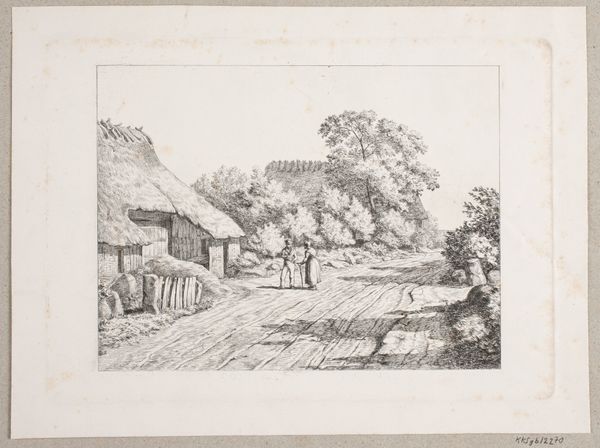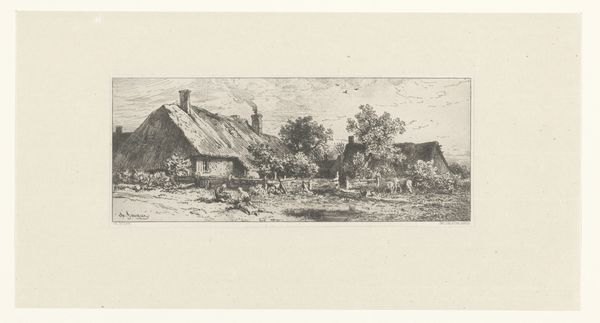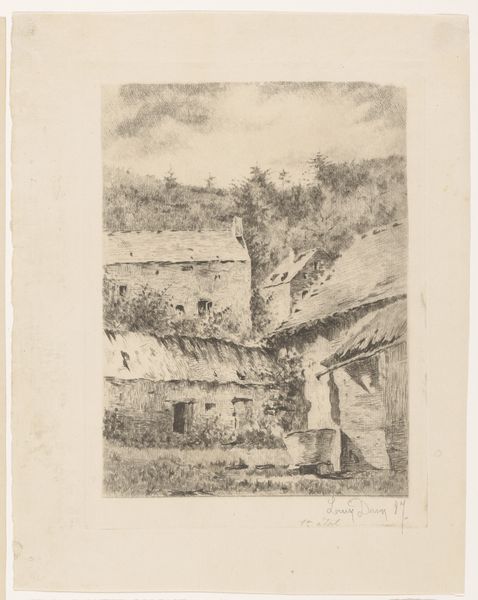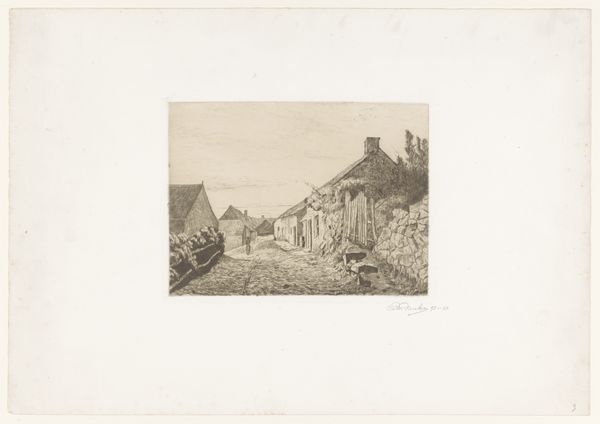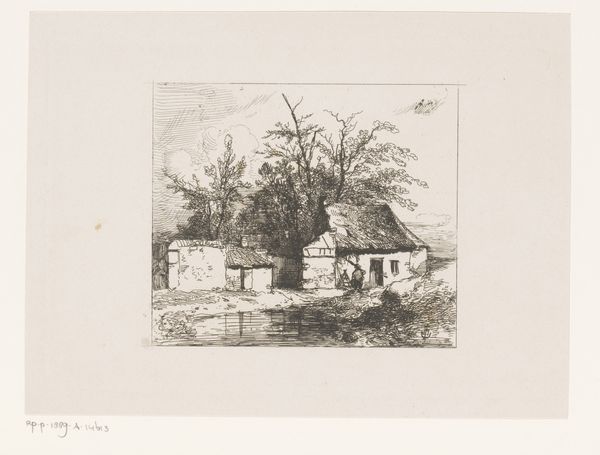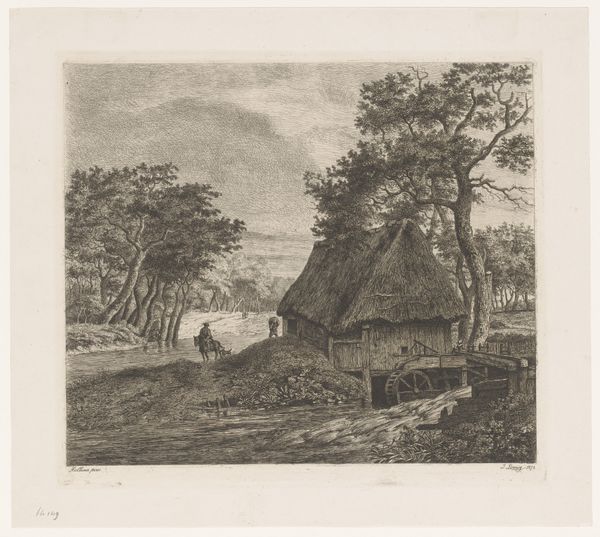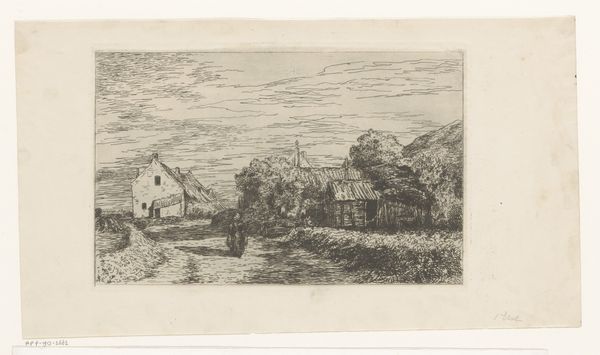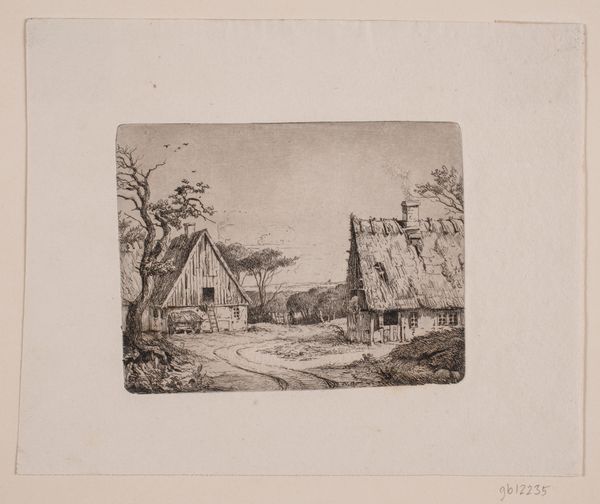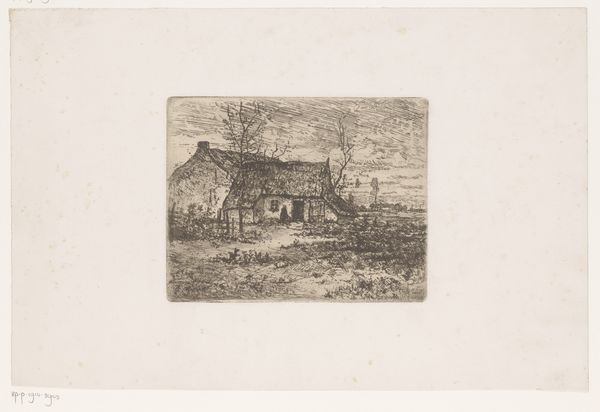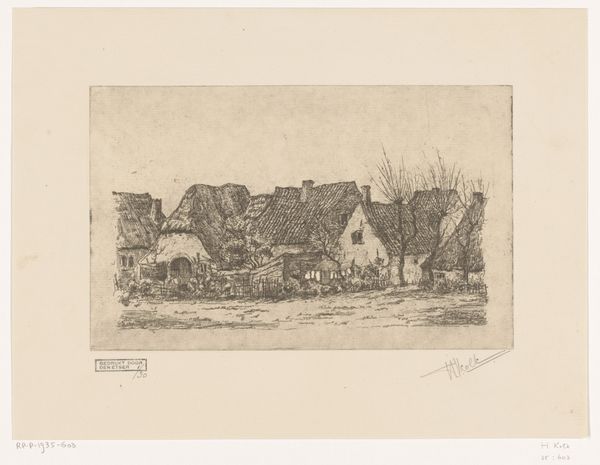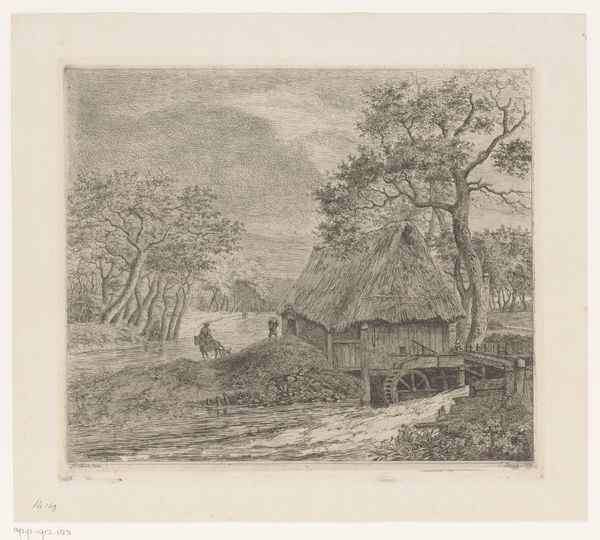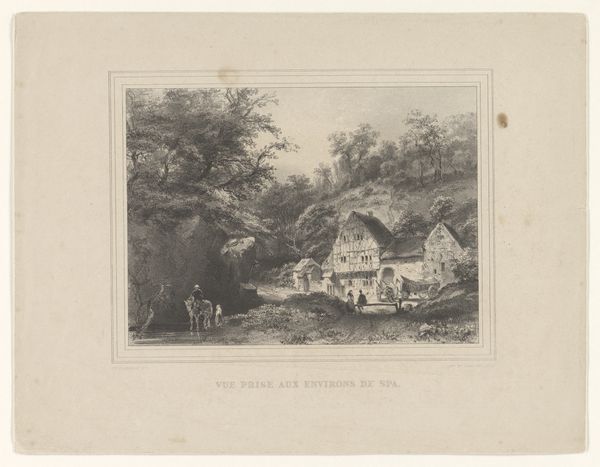
print, etching
#
baroque
# print
#
etching
#
landscape
#
etching
#
genre-painting
Dimensions: 4 1/2 x 7 in. (11.43 x 17.78 cm) (plate)11 3/4 x 9 5/16 in. (29.85 x 23.65 cm) (sheet)18 x 14 in. (45.72 x 35.56 cm) (mat)
Copyright: Public Domain
Curator: I’m struck by how humble this scene appears. Before us is an 18th-century print, likely an etching, created by N. Perignon. It’s held in the collection of the Minneapolis Institute of Art. Editor: It's modest, almost stark. I see this web of thin, wiry lines forming what looks like a cluster of thatched buildings. They seem roughly made; it’s raw and direct. Curator: Indeed. The image depicts a rural scene, typical of the genre paintings of the time, where landscapes often served as the backdrop for everyday life, a growing reflection of bourgeois taste for simple pleasures, for ‘authenticity’ away from urban centres. The proliferation of images such as this print also played an important role in how new, expanding audiences consumed ‘landscape’ and the image of ‘country life’ – did you notice the figures mounted on the horses? This isn't a picture of complete poverty or desolation; the image suggests an aspirational middle ground for many. Editor: Good point; I’d missed that initially. Etching as a process is really fascinating. I see how the artist is deploying the medium to portray what you are saying. The material choice itself makes the image accessible; it is easily reproducible and relatively affordable, suiting a desire for this vision of rural idyll in many homes. Look at the details on the roofs - they really capture a rough thatchness that perhaps wouldn’t have been as convincing with a brush. The artist must have had a familiarity with the daily life involved in making this vision of simplicity real. Curator: Precisely. The rise of printmaking in the 18th century made art more democratic, accessible to a broader public beyond the aristocracy. And this rustic scene resonates with the Baroque interest in drama—a quieter drama, perhaps, focusing on the dignity and ‘authenticity’ of rural existence, a contrast to the perceived decadence of courtly life. Editor: Ultimately it reminds us that there's skill and material labor involved, transforming our surroundings into things we own and consume. It's an intimate glimpse into how those materials – and how this image too – shape how we feel about ‘nature’. Curator: So it does. In essence, we're left with a reflection on how images shaped perceptions. Editor: I agree. I am leaving here with an extended idea of this print beyond the idyllic representation.
Comments
No comments
Be the first to comment and join the conversation on the ultimate creative platform.

